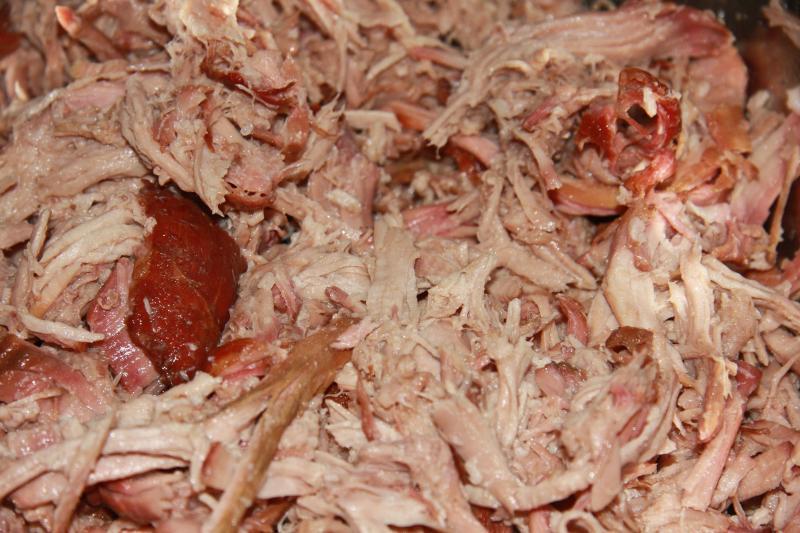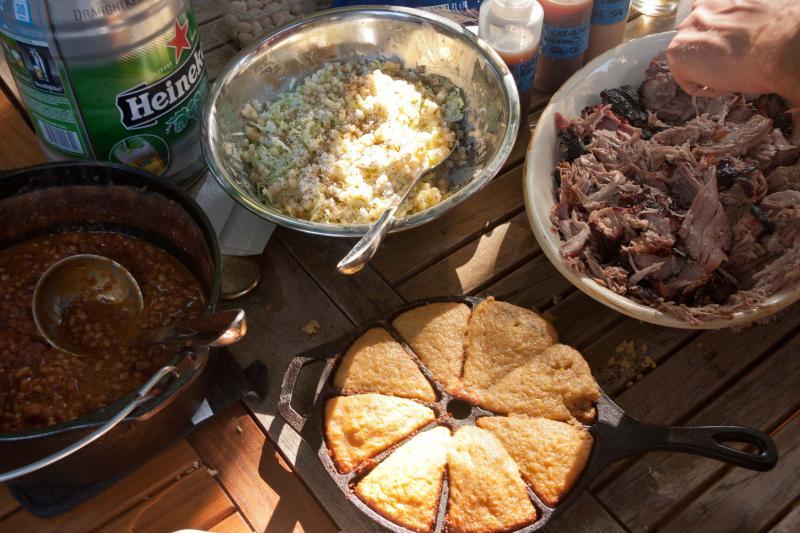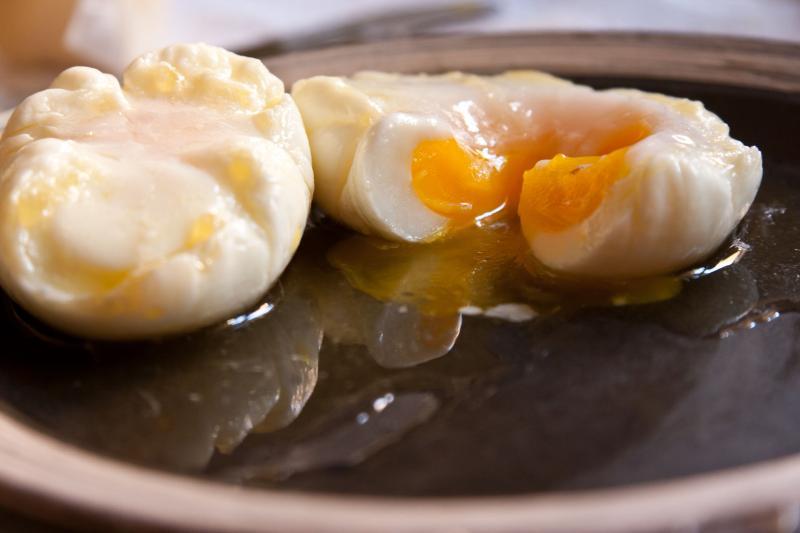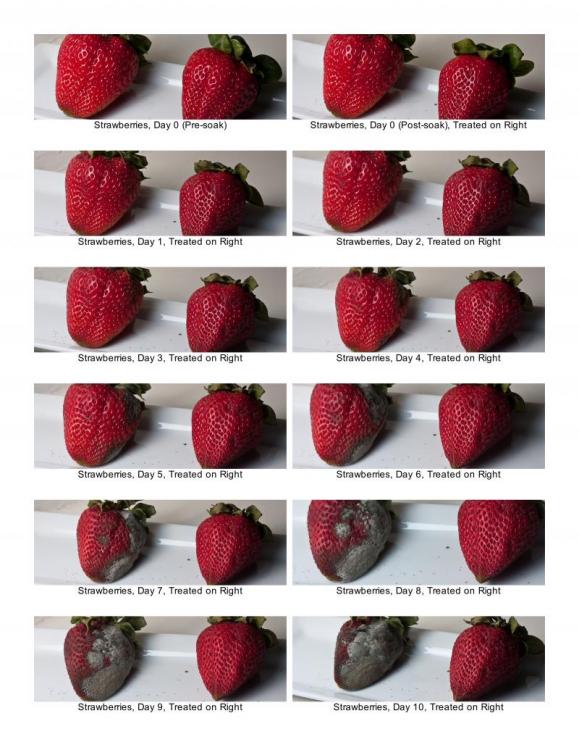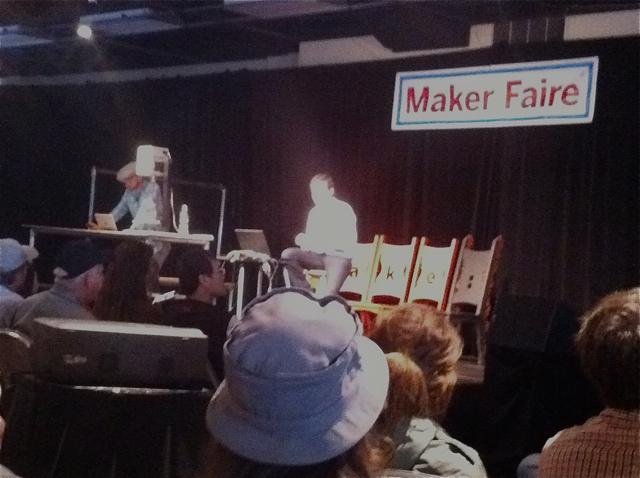
Borgstrom
participating member-
Posts
130 -
Joined
Content Type
Profiles
Forums
Store
Help Articles
Everything posted by Borgstrom
-
I usually get my short ribs from Costco, and they come boneless and pretty well-trimmed.
-
Yes, I used isomalt. I found it online and have never seen it at my WF...
-
The Food Saver/Vacuum Sealer Topic, 2011 to Present
Borgstrom replied to a topic in Kitchen Consumer
It has two ports in the vacuum area - one for the vacuum suction, the other for the vacuum sensor. The vacuum suction port can be used for accessories - I have tried it a few times to do things like make aerated chocolate, but not for sealing liquids. I eventually got a cheap impulse sealer (about $40 online) to make my liquid sealing a bit easier. Some day I'll have to go all the way and get a chamber machine.... -
It can be automated if you're willing to part with $1100 http://www.robotcoupeusa.com/products/product-info.php?id=19
-
I've kept some powders as long as a week or so; no experience beyond that. Key point is to keep the powder dry. I put a desiccant pack in with the powder, all in an airtight container.
-
I'm impressed that you were able to keep the temp so low. I've only been able to get it down to about 200F reliably, and this is with everything almost completely closed up and no Guru. When I attach the Guru there is enough airflow that, even with the fan off, temps go up to 250F. I tried closing the slider on the Guru attachment to about 3/4 closed, but it had no obvious affect. What's your secret?
-
Why is this? Did they explain? I don't know...I didn't think to ask at the time for clarification, hence my follow up here. I'll have to look in their book to see if it's covered....
-
I took the Ideas in Food: Sous Vide 2.0 class at Le Sanctuaire today. During the class, Alex mentioned you'll get better results if you chill & retherm SV-cooked foods rather than just use directly from the SV cooking bath. I always thought the chill/retherm steps were just to stop cooking and reheat food prior to service, usually in a commercial setting. Does anyone have experience with this? Will you get better results with a chill/retherm cycle even for items that will be used immediately? Perhaps time for another experiment...
-
Well, the experiment has concluded...for now. I used the MC best bets cola brine for both pork shoulders, including the 7% brine injection. Soak time was 48H instead of 72H suggested; rinse time was 1.5H instead of 2H suggested. I used boneless pork shoulder without skin, whereas MC said to use bone-in with skin, so I figured brining would happen faster. Both had an initial smoke in the BGE for 7 hours at between 200F and 225F (I couldn't get down to 150F suggested by MC). I used oak lump charcoal plus applewood chunks. Shoulder number 1 continued in the BGE for another 7 hours until it reached 190F internal. Shoulder number 2 was bagged and put into a 65C water bath for 60H (instead of 72H suggested by MC) Both shoulders were pulled apart with 2 forks when finished. Since shoulder 1 was finished Sunday and shoulder 2 was finished Tuesday, it was impossible to compare their "fresh" flavor just out of their respective cookers. This might put shoulder 1 at a disadvantage, as I had to re-warm it. Results: Both shoulders tasted fantastic - no complaints on the cola brine! The smoked-only shoulder had an amazing bark; the smoked-then-SV shoulder had no bark to speak of. The smoked-then-SV shoulder left about 1.5cups liquid in the bag; I used this to moisten the pork after I pulled it. As a result, the smoked-only shoulder was comparatively drier than the other The kitchen filled with smoke aroma while the shoulder was in the circulator -- apparently the bags I have are permeable to smoke flavor The smoked-only shoulder had a much more pronounced smoke flavor The smoked-then-SV shoulder felt more tender and looked more pink; the smoked-only shoulder had a more uniform brown color other than the pink smoke ring. Conclusion: At the end of the day, I'm not sure I can pick a clear winner. I think from a tenderness/moisture perspective, MC's smoke+SV approach is best. From a flavor, convenience, "theatre" perspective (it's quite dramatic to do the "reveal", opening the BBQ to see this gorgeous piece of browned meat on the grill), the traditional smoke-only version wins. For the next family BBQ, I'll probably do it the traditional way for the convenience and theatre. Side notes: MC's 3 Carolina BBQ sauces, baked beans, coleslaw and cornbread were an excellent accompaniment and are highly recommended! Also -- I've frozen the leftovers from both batches, so it will be interesting to see which version reheats better. Pork shoulder 1 (smoked for 14H to 190F internal): Pork shoulder 2 (smoked for 7H at 225F, then SV for 60H at 65C):
-
I was recently introduced to the addictive joys of ABTs, otherwise known as Atomic Buffalo Turds. Long a favorite in the BBQ enthusiast community, they rarely seem to be discussed here on eGullet. To the uninitiated, ABTs are stuffed, wrapped and smoked/grilled jalepeno peppers. From what I can tell, there are as many ABT recipes as there are BBQers. My first experience was pretty basic -- a jalepeno cut in half & deseeded, filled with cream cheese flavored with spice rub, wrapped in bacon and smoked using indirect heat at about 250F until the bacon was done. The taste just amazing -- smoke permeated the cheese and bacon while the jalepeno developed a deep roasted flavor balanced with just the right amount of heat. They have quickly become a required part of any weekend BBQ for us. What's your favorite way to make ABTs?
-
Well, the first part of the experiment is over; you can see a description of our MC BBQ on this post. The second pork shoulder is still in the circulator; I'll probably take it out Tuesday night. All I can say at this point is that the smoke+SV version will have to be spectacular to prevail over the smoke-only one we had tonight! It was most excellent!
-
We had a Modernist Cuisine BBQ on Sunday. Menu included: Cola-brined pork shoulder (3-172), cooked on BGE with lump+applewood about 14H until 190F internal North Carolina (Eastern Style) BBQ sauce (5-70) North Carolina (Lexington Style) BBQ sauce (5-71) South Carolina BBQ Sauce (5-70) Baked Beans (5-77) White coleslaw (5-72) Cornbread (5-76) For appetizers (Not from MC & eaten before camera came out) - babaganoush with applewood-smoked eggplant - ABTs (look it up) with Jalapeno, cream cheese, Dizzy Pig rub, bacon -- smoked on BGE - baby back ribs with Dizzy Pig rub I can't move...
-
I've got exactly the same reaction to 43C salmon. I love the flavor and texture, but always seem to expect something warmer. Searing briefly after the bath helps to get a warmer mouthfeel , but you invariable get some overcooked parts. As others have mentioned, a warm plate helps keep it from cooling further. At the end of the day, I think you just have to accept that 41C or 43C salmon is not going to feel hot. It's a different preparation. If you want hot, then fry, grill, poach, etc.
-
I've got two pork shoulders in the fridge now for cooking this weekend with by soon-to-be-picked-up BGE. I've been researching the best ways to do pulled pork, pouring over MC, this site, and several other BBQ forums - with countless "perfect" techniques. A perfect opportunity for an experiment! Now the question is, which variable to explore? Injection: yes/no; recipe Brine: yes/no; recipe Rub: yes/no; recipe Mop: yes/no; recipe Smoke: yes/no; wood; temp; time Sous vide: yes/no; temp; time What does everyone think would be the variable to test? I'd like to pick just one; I'll have other chances later in the summer to look at others. I'm thinking of exploring Sous Vide: yes/no -- doing one shoulder just in the BGE and the other started in the BGE and finished SV per MC (5-67). Any suggestions on the other items? I'm thinking MC's best bet injection/brine (Cola -- 3-172), but I haven't seen this used anywhere else here or at other sites so I'm a bit nervous. Has anyone tried this? I'll need to get it the meat in the brine tomorrow for it's 72H soak...
-
No firsthand experience with worms, but I have eaten 41C sous vide salmon several times with no problems. Probably the safest thing would be to call your doctor/nurse to get a recommendation. However, here are some points extracted from Modernist Cuisine [1-122, 1-123]: - Freezing kills the worms - Cooking fish to internal temperature of 60C or more for one minute kills the worms - Worms [anisakid] generally die after a week or so in the human body - Infection [anisakiasis] can generate quite a stomach-ache in meantime - Strong allergic reactions, although less common, could culminate in anaphylactic shock - 10% of raw salmon samples from 32 sushi bars in Seattle area had anisakids - The US reports fewer than 10 cases of anisakiasis per year
-
I got (or will get) my BGE for $850, including a nest (metal stand). This is a special the local dealer has for their "Eggfest" later this month. Otherwise I could have just picked one up for a few bucks more from their shop immediately; no special order required. I'd also note that, from what I've read, BGE is pretty efficient with charcoal -- the ceramic walls/top retain heat well, and when you are done you can close everything up and save unburned charcoal for next time. For indirect cooking they offer a "plate setter" to protect foods from direct exposure to the coals.
-
What kind of cooking do you want to do? low&slow -- 15 hours at 220F for pork butt; high-heat direct grilling -- 2-3 minutes at 700F for steak; hot/cold smoking; pizza/bread? For that kind of money, you might want to consider a ceramic cooker which can handle all of these cooking tasks. The Big Green Egg seems to be pretty popular, and has lots of cool accessories, including multi-tier racks if you are cooking for a crowd. I'm picking mine up in a few weeks!
-
I just got one from Eggs by the Bay, a large with nest for $850 as part of their Eggfest in a few weeks ...but I have to wait until then to pick it up. This place in Sonoma, California has good prices too (large for $828; no nest), and ships free within the US. Not sure about to Europe. As an earlier poster said, there's also something to be said about buying local, which would enable you to get easier warranty service (they are warranted for life) should you need it; otherwise it's up to you to ship it back to the factory.
-
I made the Egg Blossom (4-80) for breakfast today. It was OK, but I'm not sure the effort of putting the egg in the plastic wrap was really worth it. The delicious duck fat/olive oil/truffle oil mix was really the star for me. I would have preferred a more liquid yolk, so some timing adjustment is needed. Next time I think I'll just try 85C for 10 minutes (instead of 12), cook in shell, and season after unshelling with the oil/fat mix. I think just frying the egg in the mix would also be interesting.
-
I let them both go to the moldy stage, so I didn't feel very motivated to do a taste test! Right out of the 60C/15sec soak I couldn't tell any difference visually. I had expected the leaves to wilt or something, but it looked no different from the strawberry straight from the package. Next time I'll treat a few more and do some taste tests before they get moldy.
-
I've always heard you should never put strawberries (or tomatoes for that matter) in the fridge. I don't recall reading anything in MC on the topic...perhaps its time for another experiment!
-
This isn't really cooking I suppose, but I was interested in the Heat-Treated Fruit (3-359) concept and if it really worked. Last week, I brought home some great looking strawberries from Whole Foods and decided to do an experiment. Following the Best Bets for strawberries (60C for 15 seconds), I soaked one strawberry in a 60C water bath for 15 seconds and set it on a plate with an un-soaked strawberry as a control, keeping both at room temperature (about 20C). The treated strawberry did indeed last longer than the untreated -- 8 days vs. 4 days respectively before the first sign of mold. I can't say that either one looked great at day 3 or 4 (compared with when they came from the store), but if mold prevention is what you are looking for it seems the heat treatment works. See photo sequence below. I may repeat the experiment in the summer when I can get really fresh strawberries at the farmers market. I'll also probably add a third strawberry soaked in room-temperature water for 15 seconds to see if it's the water or the temperature that provides the benefit. Has anyone else had good results heat treating fruits?
-
The USDA press release also mentions a rest time of 3 minutes for whole cuts of meat. This is apparently the fist time that time-at-temperature has been used in general consumer guidance from USDA for cooking meat. I guess USDA figures we're all smart enough now to measure two things! A "rest time" is the amount of time the product remains at the final temperature, after it has been removed from a grill, oven, or other heat source. During the three minutes after meat is removed from the heat source, its temperature remains constant or continues to rise, which destroys pathogens. But it's not really clear why they didn't go all the way and give time-at-temp guidelines for ground meat or poultry. Perhaps USDA's perception of consumer IQ will continue to grow and we'll get another guideline update in a few years... This change does not apply to ground meats, including ground beef, veal, lamb, and pork, which should be cooked to 160 °F and do not require a rest time. The safe cooking temperature for all poultry products, including ground chicken and turkey, remains at 165 °F.
-
"Modernist Cuisine" by Myhrvold, Young & Bilet (Part 3)
Borgstrom replied to a topic in Cookbooks & References
I was very fortunate to be able to attend a presentation given today by Maxime and Ryan on the making of MC to a packed house at Maker Faire in San Mateo. While the talk/slides were geared more towards people who hadn't been exposed to the book, it was nice to meet them both in person and get some insight into their perspectives on the book. It was very interesting for me to hear from Ryan some of the processes he used, both in Photoshop and in the machine shop, to get some of those iconic shots; and from Max about how the process of deconstructing / reconstructing basic ingredients with modernist approaches (e.g. the pea and the centrifuge, constructed creams) have opened whole new avenues of creativity that are just now beginning to be explored. (sorry for the horrible quality of my cell phone photo...) They gave the audience a special treat at the end of the talk -- MC Pistachio Gelato using a constructed cream of pistachio oil and water -- no dairy or eggs. As other's have said, it is the most concentrated pistachio flavor you can imagine in a gelato/ice cream; very, very good! Max actually demonstrated emulsifying the pistachio oil / water on stage with a rotor-stator homogenizer -- I have to get one of those! Much faster and quieter than I expected. Thank you Max & Ryan for a great talk, and tasty gelato! -
I couldn't tell you these days. I was a big fan of cooking shows for years, but felt recently they were getting monotonous and boring. It was finally Marcel's Kitchen that pushed me over the edge. After watching one episode of that drivel, I removed all of the cooking shows from my TiVo schedule. Haven't looked back since; no regrets. If I want some cooking edutainment, I'll check out things like the Harvard lecture series on YouTube or go see live demonstrations/talks (like the one tomorrow at Maker Faire with Max Bilet)


